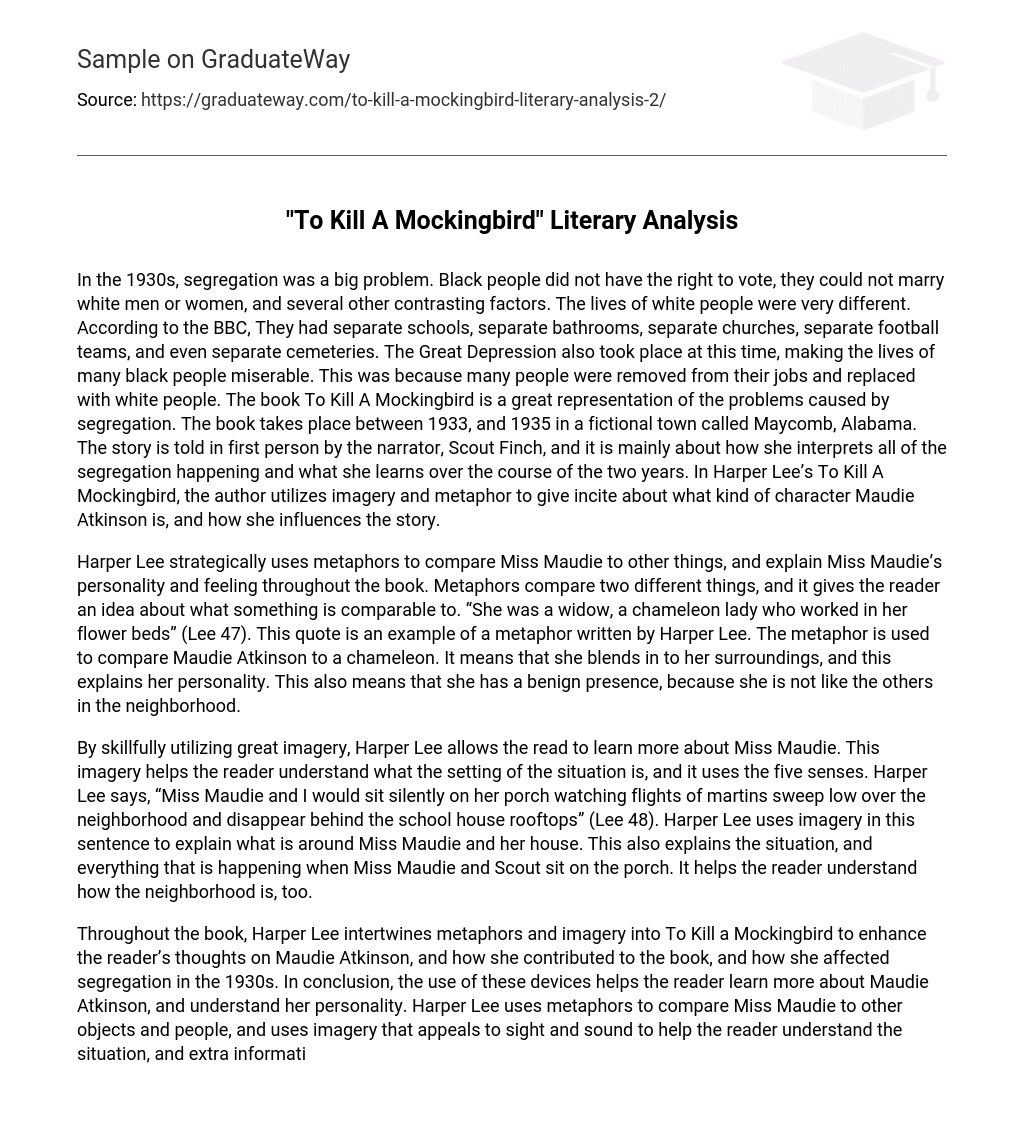In the 1930s, segregation was a big problem. Black people did not have the right to vote, they could not marry white men or women, and several other contrasting factors. The lives of white people were very different. According to the BBC, They had separate schools, separate bathrooms, separate churches, separate football teams, and even separate cemeteries. The Great Depression also took place at this time, making the lives of many black people miserable. This was because many people were removed from their jobs and replaced with white people. The book To Kill A Mockingbird is a great representation of the problems caused by segregation. The book takes place between 1933, and 1935 in a fictional town called Maycomb, Alabama. The story is told in first person by the narrator, Scout Finch, and it is mainly about how she interprets all of the segregation happening and what she learns over the course of the two years. In Harper Lee’s To Kill A Mockingbird, the author utilizes imagery and metaphor to give incite about what kind of character Maudie Atkinson is, and how she influences the story.
Harper Lee strategically uses metaphors to compare Miss Maudie to other things, and explain Miss Maudie’s personality and feeling throughout the book. Metaphors compare two different things, and it gives the reader an idea about what something is comparable to. “She was a widow, a chameleon lady who worked in her flower beds” (Lee 47). This quote is an example of a metaphor written by Harper Lee. The metaphor is used to compare Maudie Atkinson to a chameleon. It means that she blends in to her surroundings, and this explains her personality. This also means that she has a benign presence, because she is not like the others in the neighborhood.
By skillfully utilizing great imagery, Harper Lee allows the read to learn more about Miss Maudie. This imagery helps the reader understand what the setting of the situation is, and it uses the five senses. Harper Lee says, “Miss Maudie and I would sit silently on her porch watching flights of martins sweep low over the neighborhood and disappear behind the school house rooftops” (Lee 48). Harper Lee uses imagery in this sentence to explain what is around Miss Maudie and her house. This also explains the situation, and everything that is happening when Miss Maudie and Scout sit on the porch. It helps the reader understand how the neighborhood is, too.
Throughout the book, Harper Lee intertwines metaphors and imagery into To Kill a Mockingbird to enhance the reader’s thoughts on Maudie Atkinson, and how she contributed to the book, and how she affected segregation in the 1930s. In conclusion, the use of these devices helps the reader learn more about Maudie Atkinson, and understand her personality. Harper Lee uses metaphors to compare Miss Maudie to other objects and people, and uses imagery that appeals to sight and sound to help the reader understand the situation, and extra information about the story. Literary devices are very important, especially in a fictional book. These literary devices can do a lot to a story. Readers can feel a range of emotions while reading a story filled with rich imagery, or great metaphors. They enhance the plot of the story, and give readers the ability to appreciate, interpret and analyze a literary work, like To Kill A Mockingbird.





